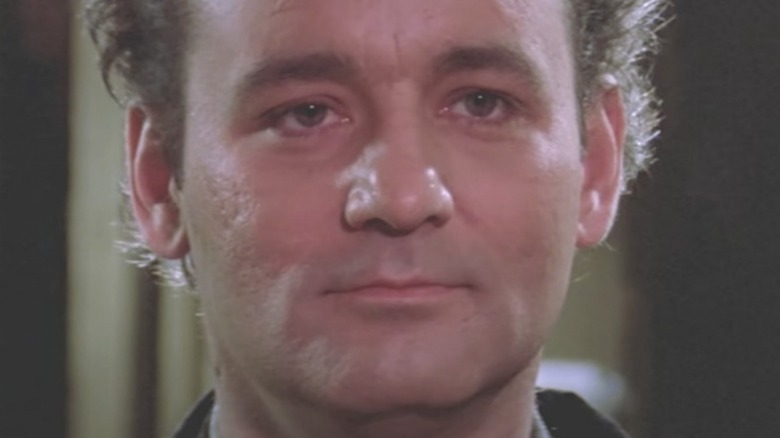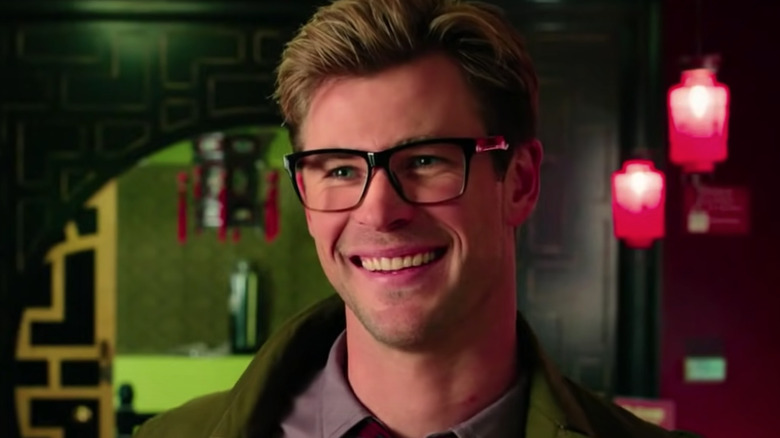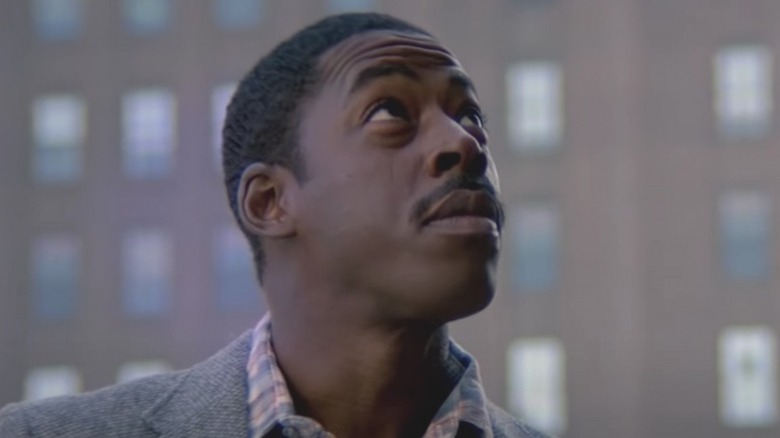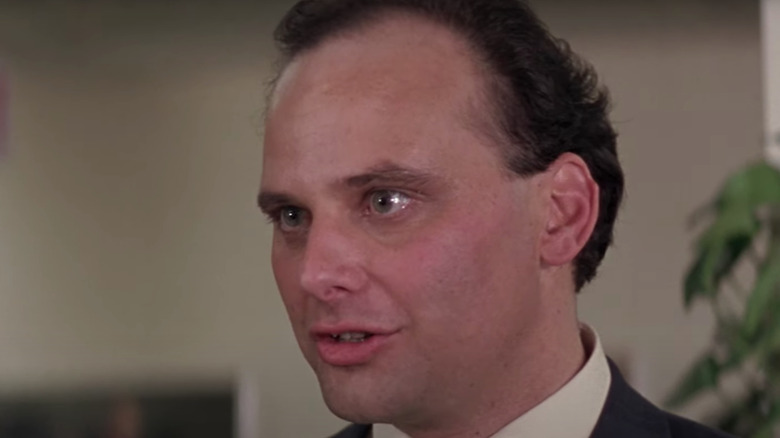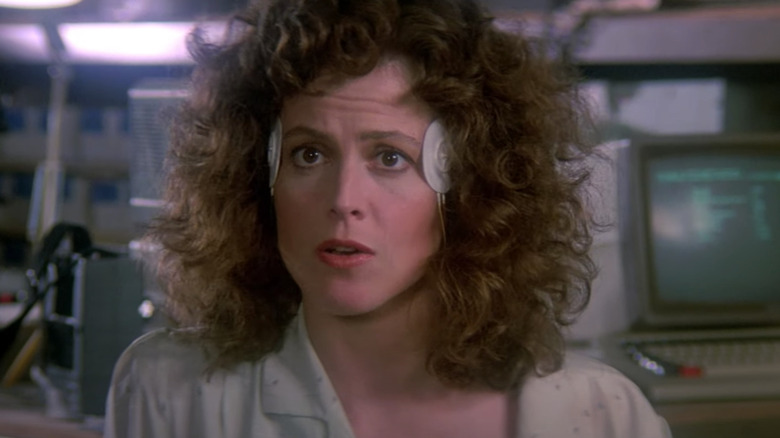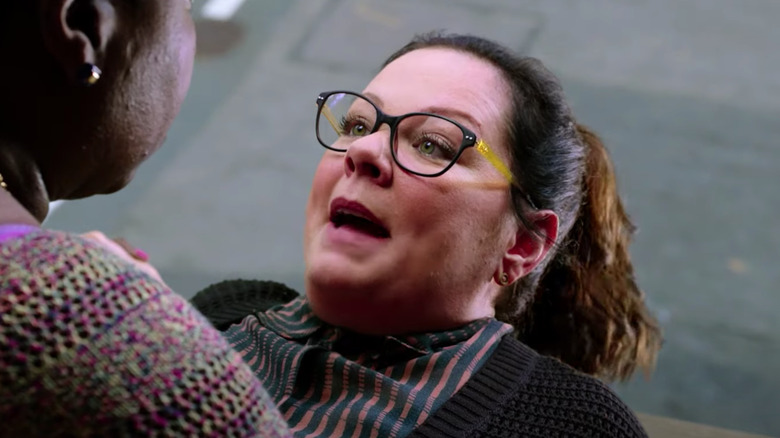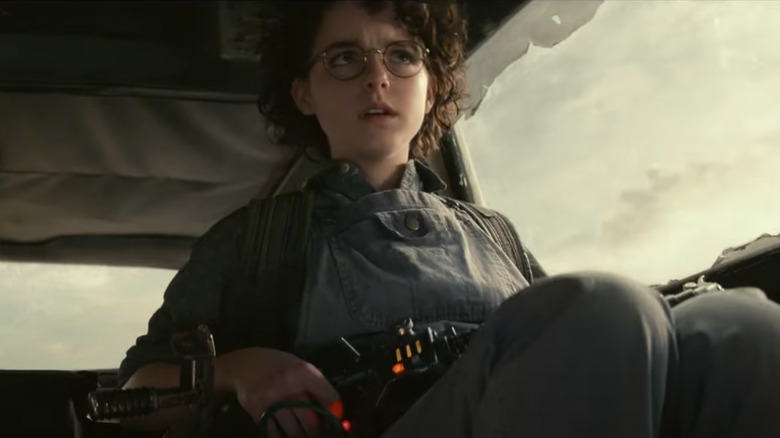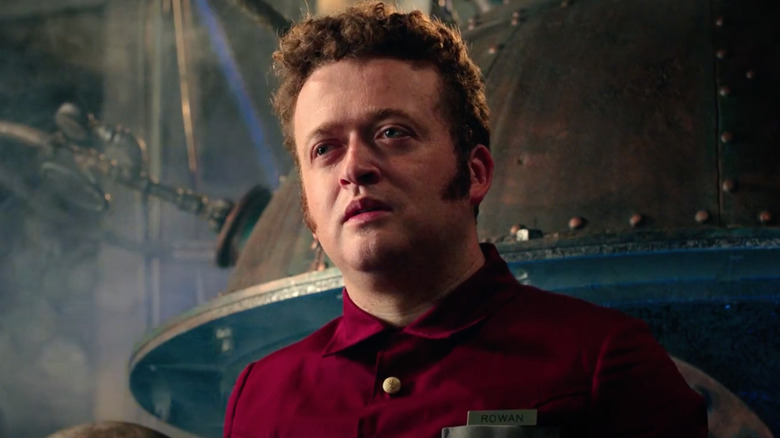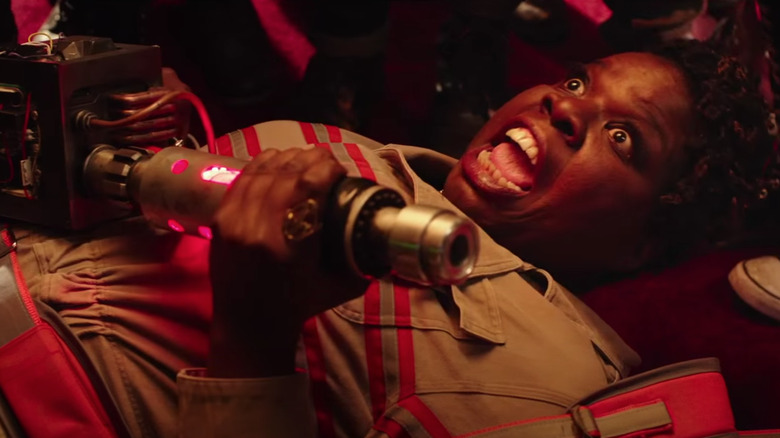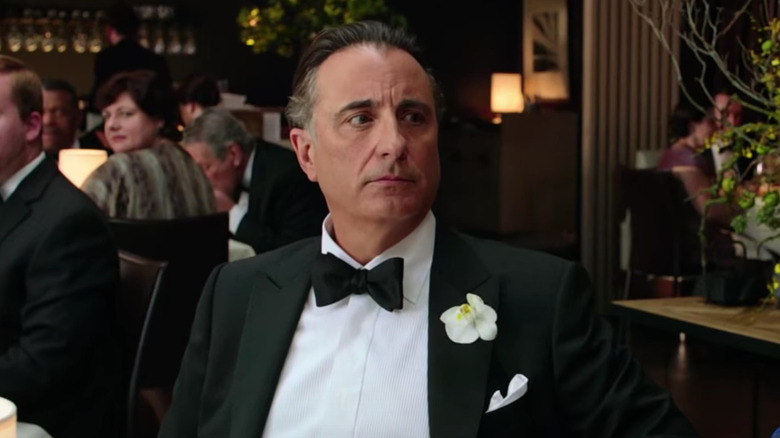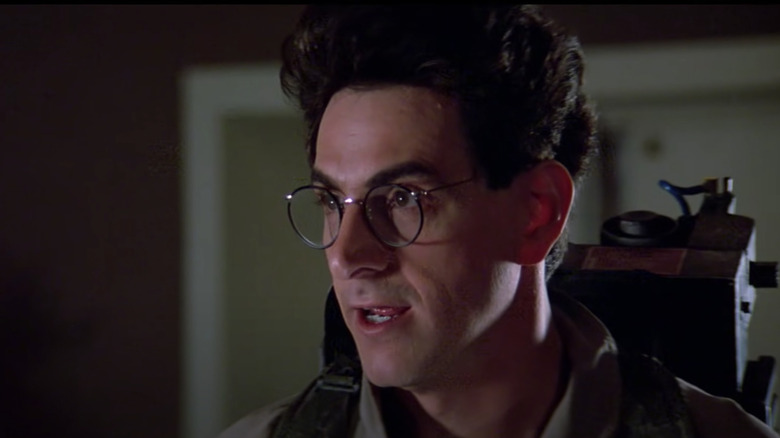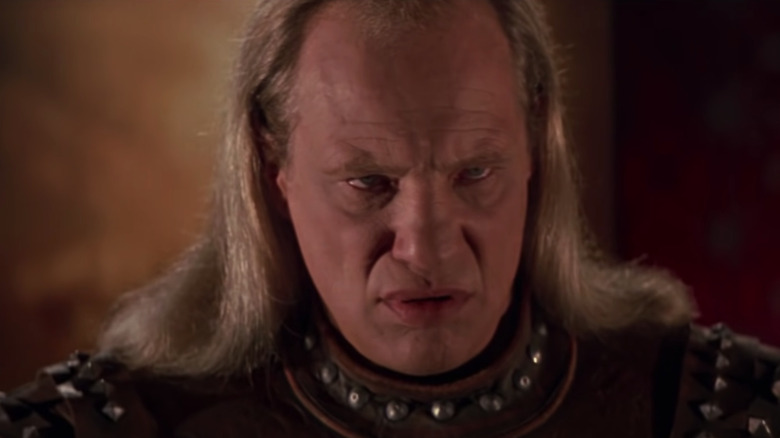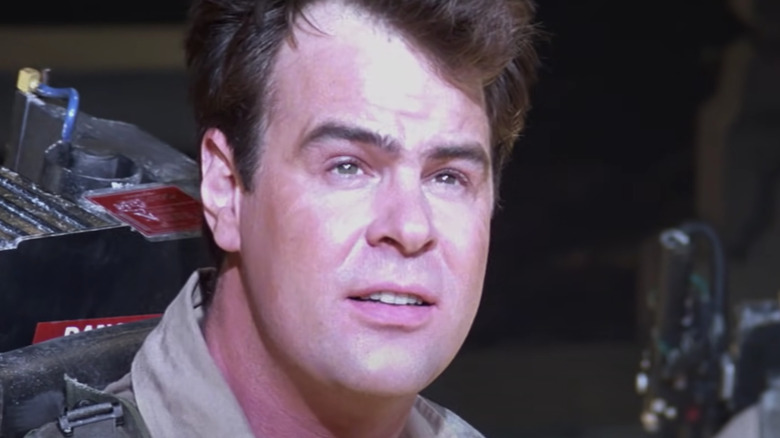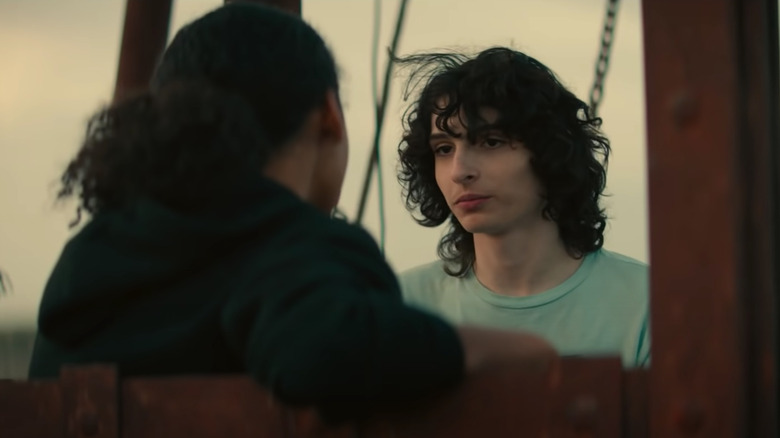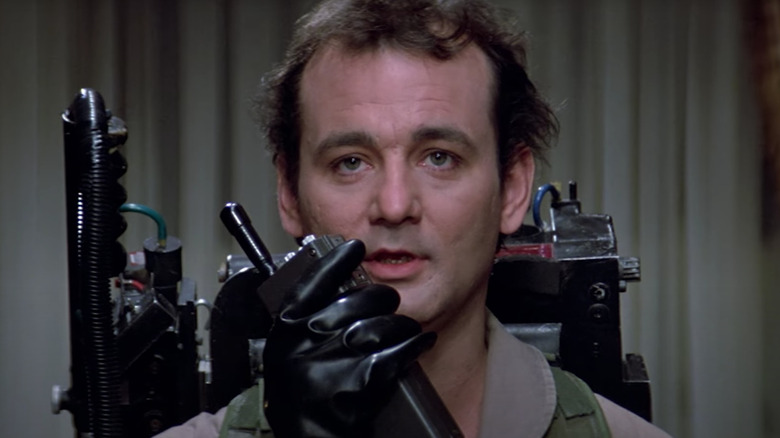The 7 Best And 7 Worst Ghostbusters Characters Ranked
When "Ghostbusters" hit theaters in the summer of 1984, few could have predicted the enormous, nay, otherworldly success it would achieve. Starring Bill Murray, Dan Aykroyd, Harold Ramis, Sigourney Weaver, Ernie Hudson, Annie Potts, and Rick Moranis, the Ivan Reitman-directed supernatural comedy was a hit with critics and audiences alike. It wound up grossing a massive $295 million against a $30 million production budget (unadjusted for inflation). Put it this way: "Ghostbusters" sold nearly as many tickets as "Avengers: Infinity War." Yeah, it was huge.
The success of the original led to 1989's "Ghostbusters II," as well as an animated spin-off titled "The Real Ghostbusters" that ran from 1986 to 1991. Them came a 2016 reboot starring Melissa McCarthy, Kristen Wiig, Kate McKinnon, Leslie Jones and Chris Hemsworth that was quickly discarded by the studio (due to toxic fan outcry) and replaced by "Ghostbusters: Afterlife." Directed by Jason Reitman (son of Ivan), "Afterlife" serves as a proper sequel to "Ghostbusters" and "Ghostbusters II" and puts the original cast alongside newcomers Carrie Coon, Finn Wolfhard, Mckenna Grace, Paul Rudd and Celeste O'Connor with tremendous results, even if the pic does lean a little too hard on nostalgia.
At any rate, each "Ghostbusters" entry offers its own unique spin on the formula and introduces an abundance of colorful characters that either cast an indelible spell or leave you covered in slime. Which "Ghostbusters" characters are the best? Read on to find out.
Worst: Kevin Beckman
"Ghostbusters 2016" has a lot of problems. From its uninspired premise, which echoes the original film beat for beat, to a slavish devotion to improvisation that all but derails much of the comedy, Paul Feig's well-intentioned misfire struggles to find a proper tone, coming across as an extended "Funny or Die" sketch more than an actual motion picture.
Case in point: Kevin, the dimwitted intern whose good looks are matched only by his supreme stupidity. As played by God of Thunder Chris Hemsworth, Kevin initially comes across as a good guy with one or two screws loose. As the film progresses, however, we learn that Kevin is mentally inept and probably in need of professional care. The man covers his eyes whenever he hears loud noises, comes up with crude marketing ploys, sucks at answering phones and dealing with customers, and even makes a horrible cup of coffee. Why would anyone hire this man?
That's too bad, because, as revealed in "Thor: Ragnarok" and "Avengers: Infinity War," Hemsworth has the comedic chops to pull off the witless type. Unfortunately, with "Ghostbusters 2016," Feig is more interested in crafting generic, broad comedy than taking the time to develop clever humor. He consequently wastes Hemsworth's talents on goofy pratfalls, much of which should have been left on the cutting room floor.
Best: Winston Zeddemore
Despite not appearing until the tail end of "Ghostbusters," and figuring even less prominently in "Ghostbusters II" (for reasons, via The Guardian), Winston Zeddemore (Ernie Hudson) remains a prominent staple of the "Ghostbusters" franchise. So much so that "Afterlife" director Jason Reitman plans to strongly feature the character in future sequels.
What makes Winston so appealing is that he's just a guy looking for a steady paycheck. He doesn't join Peter, Ray and Egon until the team is overloaded with work, and even then he has less interest in the supernatural entities he's hunting than the benefits awarded for doing do. In other words, he's a blue-collar worker trying to make a living, which is essentially the very essence of the "Ghostbusters" business.
Indeed, when the Ghostbusters are arrested following the containment unit mishap, Winston asks for his own lawyer, and consistently maintains that he "just works with these guys" and has no allegiance to the team. When battling the Stay Puft Marshmallow Man, he shouts, "This job definitely isn't worth eleven five a year," essentially echoing the sentiments of most audience members, who would just as soon find another job than risk losing their lives battling a Sumerian god atop a New York high-rise.
The only downside to Winston's character is that he doesn't ever seem to enjoy much screen time, which is a shame because, as seen in "The Real Ghostbusters," he has the tools and talent to be a star member of the team.
Worst: Jack Hardemeyer
"Ghostbusters" managed to find unique ways to challenge our heroes, either via supernatural means or governmental hindrances. Walter Peck, played by William Atherton, emerged as a worthy foe not because he was a mustache-twirling creep, but by nature of being an overzealous (and petty) inspector for the Environmental Agency. The character posed a valid threat to our group and nearly brought about the end of the world as a result.
The largely forgettable "Ghostbusters II" tried and failed to replicate Peck via mayoral assistant Jack Hardemeyer (Kurt Fuller), a character who never quite works because his intentions are never fully brought to light. Where Peck's actions stemmed from a desire to stop "these bozos" from negatively impacting the environment, Jack merely wants to help Mayor Lenny get re-elected — a subplot that has very little impact on the plot aside from decommissioning our heroes for a short spell. In fact, Jack disappears for much of the film and is quickly discarded in the third act when the Mayor decides to fire him for imprisoning the Ghostbusters. As a character, Jack is largely forgettable; as a villain, he downright sucks.
Best: Dana Barrett
Thanks to Sigourney Weaver's strong performance, Dana Barrett leaves a lasting impression in "Ghostbusters" despite more or less occupying the generic "love interest" role. Weaver imbues Dana with the same tough-as-nails gusto as Ellen Ripley (her character in "Alien") and posits the character as a single woman who's about as interested in romance as Gozer is in vacationing in the Bahamas. When Peter makes advances towards her, she promptly throws him out of her apartment; she only reluctantly goes out with the man in order to acquire more information about her case. The pair do end up together at film's end, but we learn in "Ghostbusters II" that the relationship flatlined mostly due to Peter's immaturity, prompting Dana to pack up and head for greener pastures elsewhere.
Following another unsuccessful romance with "the violinist," during which she gives birth to little Oscar, Dana opts for the single mother life and, by all accounts, successfully raises the child on her own while working as a musician and art restorer. Sheesh, what can't Dana do?
The only downside to Dana's character is that her relationship with Peter is never fully resolved in a satisfying manner. Sure, Dana can survive on her own, but she's also the only person who can successfully keep Peter in check. Dana and Peter are soulmates, which means we're going to need more than that brief "Ghostbusters: Afterlife" mid-credit scene before we can successfully move on.
Worst: Abby Yates
Melissa McCarthy is a great actor with strong comedic chops, as evidenced by her performances in "Bridesmaids," "Spy," and "The Heat." That's why it was so bizarre that her turn as paranormal scientist Abby Yates in Paul Feig's "Ghostbusters 2016" lacked the charm and/or humor we've grown accustomed to seeing from her.
Leaning far too much on improvisation, McCarthy dives into bits about watery soup, engages in her usual assortment of physical comedy gags — i.e., pratfalls — and does her best with the pseudo-scientific dialogue, but fails to offer anything positive to the picture. It doesn't help that Abby is written as broadly as possible and is about as interesting as a slice of bread. A former friend of Erin Gilbert (Kristin Wiig), who has ventured off into paranormal studies on her own, Abby behaves more like a deranged science teacher than a paranormal investigator. She is somehow neither frightened nor awed by the supernatural entities surrounding her. She never feels like a real person, and mostly functions as an extension of McCarthy, the actor, which is a problem that plagues many of the characters in Feig's film.
Best: Phoebe Spengler
"Ghostbusters: Afterlife" is not a perfect movie, but it is a fun "requel" to a classic franchise that has enough laughs, action and heart to compensate for its weaker aspects. Fans will certainly celebrate the numerous homages to the original pair of films, but the real secret to the success of "Afterlife" remains Mckenna Grace.
Adorned in glasses and unkempt hair, Grace's performance as Phoebe Spengler — granddaughter of Egon Spengler — is an absolute treat. The talented actor supplies a great deal of charisma to "Afterlife" via goofy dad jokes and sly wit, while handling herself well in the film's emotional moments. That Phoebe's abilities seemingly spawn at random is more a fault of the by-the-numbers script than anything to do with the young performer; it's to her credit that we're absolutely ecstatic to see more of her in future "Ghostbusters" installments.
More impressively, Grace channels the socially awkward, deadpan persona of Harold Ramis' Egon, crafting a character who is equal parts brilliant and unfit for society at large. No, Phoebe isn't quite enough to challenge the likes of Peter, Ray or Egon on this list, but she certainly comes close.
Worst: Rowan North
No film is complete without a great villain, which is probably one of the biggest reasons "Ghostbusters 2016" falls flat — there's no credible baddie for the plot to hang its hat on.
Indeed, the original "Ghostbusters," while definitely comedic, played things fairly straight. It even features some genuinely scary horror elements. The grand finale, in which our heroes battle Gozar the Gozerian, carries a dramatic punch. The characters may consistently mock the situation, but the threat itself feels very real.
By contrast, "Ghostbusters 2016" features Rowan North (Neil Casey), a disgruntled hotel employee obsessed with the supernatural. Rowan was bullied, you see, which sets him on a quest to destroy the world via Ghost Portal Mirror technology that allows him to conjure evil spirits which set out to do his bidding. He also kills himself at one point and assumes the form of the ghost from the Ghostbusters' logo — a clever concept, for sure, except the villain is never threatening or scary. All the CGI in the world can't make Rowan anything more than a slight inconvenience to our heroes, which is a shame considering the endless possibilities afforded by the Ghostbusters universe.
Best: Patty Tolan
Now that we've sufficiently dumped all over "Ghostbusters 2016" in this article, we felt it was only fair to point out one of the film's main strengths — Leslie Jones. Sure, the popular "Saturday Night Live" actor is more or less playing a variation of herself, but since Bill Murray did the same in the original, we can't complain too much.
What makes Jones' character, Patty Tolan, work so well is that she's the only member of the new group who acts like an ordinary person. We first see her working in a bland day-to-day job as an MTA worker during which she experiences her first paranormal encounter — an event that genuinely frightens her. Naturally, she runs to the Ghostbusters for help and ends up joining the team as a fourth member. During her adventures, Patty reacts to the ghouls and spirits around her with an equal dose of wonder and terror, coming the closest to conjuring the "average Joe" persona established by the original foursome.
In other words, like Peter, Ray, Egon and Winston, she's a typical New Yorker caught up in some extremely outrageous circumstances. Jones is funny as hell in the role and perhaps the only aspect of Paul Feig's comedy that induces more laughs than groans. That's got to count for something.
Worst: Mayor Bradley
We typically love Andy Garcia, but the actor's talents are completely wasted in "Ghostbusters 2016," where he plays the poker-faced Mayor Bradley. A bumbling moron, Bradley (and his team) are supposed to be credible politicians who fail to comprehend the dangers brought about by the paranormal happenings in New York. Instead, Bradley makes flat jokes, misogynistic remarks, and behaves more like a petulant child than a leader of the people.
While our views on politicians have changed drastically since the days of Mayor Lenny in the first two "Ghostbusters" films, and while we're perfectly fine with political caricatures, there's an enormous difference between clever satire and absurd stupidity. Guess which side Bradley falls on?
Honestly, we'd be a little more forgiving if the role was occupied by a lesser-known talent, but when you sign Andy Garcia — an incredible actor who has appeared in prestigious films such as "The Godfather Part III" and "The Untouchables" — it's practically a crime to not give him more to do. But that's essentially "Ghostbusters 2016" in a nutshell, a wild misfire that wastes the talents of its top-notch cast and relies far too much on goofy hijinks than smart comedy.
Best: Egon Spengler
The next time you watch "Ghostbusters," keep your attention fixed on Harold Ramis' Egon Spengler. We promise you'll gain an entirely new appreciation for this classic comedy. Ramis' performance is a legendary feat of comic acting. The late actor plays his role completely straight, but manages to find laughs through subtle actions and deadpan dialogue delivery, a decision that allows him to stand out against the likes of Bill Murray and Dan Aykroyd. Where Peter and Ray are either sarcastic or overly enthusiastic about the Ghostbusting gig, Egon is more pragmatic. He's in it purely for the science.
Indeed, when pressed to share his opinion on the firehouse, Egon offers a no-nonsense response: "This building should be condemned." Peter hilariously ignores his advice, while Ramis performs a silent groan in this scene that leaves us in stitches every time. Later, when Peter is "slimed" by Slimer, Egon reacts by telling Ray, "That's great! Save some for me." Finally, once the decision is made during the climactic battle with Gozer to "cross the streams" — a dangerous action that could lead to "a total protonic reversal" and the Ghostbusters' molecules exploding instantaneously at the speed of light — Egon assures his mates that "there's a very slim chance we'll survive." But he says it like it's good news! Classic Egon.
Worst: Vigo the Carpathian
In hindsight, it was probably a mistake to make a sequel to "Ghostbusters," which was one of those rare movies that worked despite a myriad of factors going against it. You can't fault the studio for pressing their luck with a follow-up, but such a feat would require a really good idea or concept to pull it off.
Instead, "Ghostbusters II" opts for a bizarre story revolving around mood slime and an evil painting, neither of which come close to matching the excitement, fun, and danger of the original's Gozer and Marshmallow Man. As the big bad, Vigo the Carpathian lacks the visual punch of Gozer and, despite a few creepy scenes early on, Wilhelm von Homburg's golden locks fail to evoke much terror. Plus the whole "take over baby Oscar in order to destroy the world" plot is far too cliché to take seriously, and ultimately resolves itself in the most anticlimactic way imaginable — the people of New York gather to sing "Auld Lang Syne," and their positivity vanquishes Vigo. Ugh.
At this point, the "Ghostbusters" franchise had become quite popular with kids thanks to "The Real Ghostbusters," and there's a discernible effort in "Ghostbusters II" to tone down the sex, horror and adult humor found in part one. Hence, the goofy, kid-friendly finale and Vigo's not-too-scary schtick — a peculiar case of a spin-off negatively impacting the original story.
Best: Ray Stantz
In the early 1980s, Dan Aykroyd was a comedy icon, having appeared in such hits as "The Blues Brothers," "Trading Places" and Steven Spielberg's "1941." While the actor would go on to appear in the likes of "Dragnet" and "Spies Like Us," his career reached its apex with 1984's "Ghostbusters," in which he plays enthusiastic scientist Ray Stantz. Naive to a fault and perhaps a little too trusting for his own good, Ray is, as Peter exclaims, "the heart of the Ghostbusters," and the main reason for the organization's existence. He takes out a massive loan (with a massive interest rate) to fund the program and hilariously approves the firehouse mostly because it has a pole.
As stated above, while Egon is in it for the science and Peter for fame and fortune, Ray wants to bust ghosts because, well, it's an exciting opportunity. That he eventually grows weary of the work later on only adds to the character's charm — he really is a child at heart, one who is incapable of swallowing the responsibility that goes hand-in-hand with a self-run business.
Still, audiences likely remember Ray for his follies. He nearly gets his team killed twice during the climactic battle with Gozer, first by stating he's not a god and later by conjuring a massive marshmallow man. Ray also blunders his way through "Ghostbusters II" and the ending of "Ghostbusters: Afterlife," proving that while enthusiasm doesn't always translate to success, it does lead to great comedy.
Worst: Trevor
We love Finn Wolfhard in "Stranger Things." The kid has acting chops and will likely go on to fame and fortune in future endeavors. Unfortunately, he feels shoehorned into "Ghostbusters: Afterlife," as his character, Trevor, never has much to do besides engage in a half-hearted romance with Lucky (Celeste O'Connor). He makes a few minor quips early on and is clearly meant to fill the cynical Peter Venkman role, but never gets a chance to mesh with the rest of the cast long enough to make much impact. In fact, during the final fight with a resurrected Gozer, Trevor mostly watches the other characters do their thing and only engages at the very last second. He has zero emotional connection to his mother or sister, and never connects with his grandfather, Egon Spengler, in the same manner as Phoebe.
Sure, he gets to drive Ecto-1 around a cornfield, and lives the dream by suiting up as a Ghostbuster — something Wolfhard already did in "Stranger Things" — but Trevor should have figured into the plot more. Hopefully, moving forward, Trevor's role will expand and give us an opportunity to see what Wolfhard is really made of.
Best: Peter Venkman
As MVPs go, you can't do much better than Peter Venkman. As played by iconic actor Bill Murray, Peter is the reason the "Ghostbusters" franchise achieved so much success. Without him (and by default, Murray), you have a high-concept film without an anchor. The character's dry wit and capitalistic sensibilities ground the picture in some form of reality, while perfectly reflecting the spirit of America in the 1980s. As Dana suggests early on, Peter is less a scientist than a game show host, albeit one who knows how to market a brand and milk a concept for all its worth.
Murray famously ad-libbed much of his dialogue, leading to doozies such as "Human sacrifice, dogs and cats living together — mass hysteria!" and "Why worry? Each one of us is carrying an unlicensed nuclear accelerator on his back." The actor is so good in the role that he nearly singlehandedly salvages "Ghostbusters II," and makes a strong impression in his very brief cameo in "Ghostbusters: Afterlife." (We're not sure what he was doing in "Ghostbusters 2016.")
If you watched "The Real Ghostbusters," you'll see that Peter is actually an interesting character capable of hogging the spotlight no matter who plays him. That's not a knock against Murray, except to say Peter was the role of a lifetime: a rare case of an actor being in the right place at the right time.
